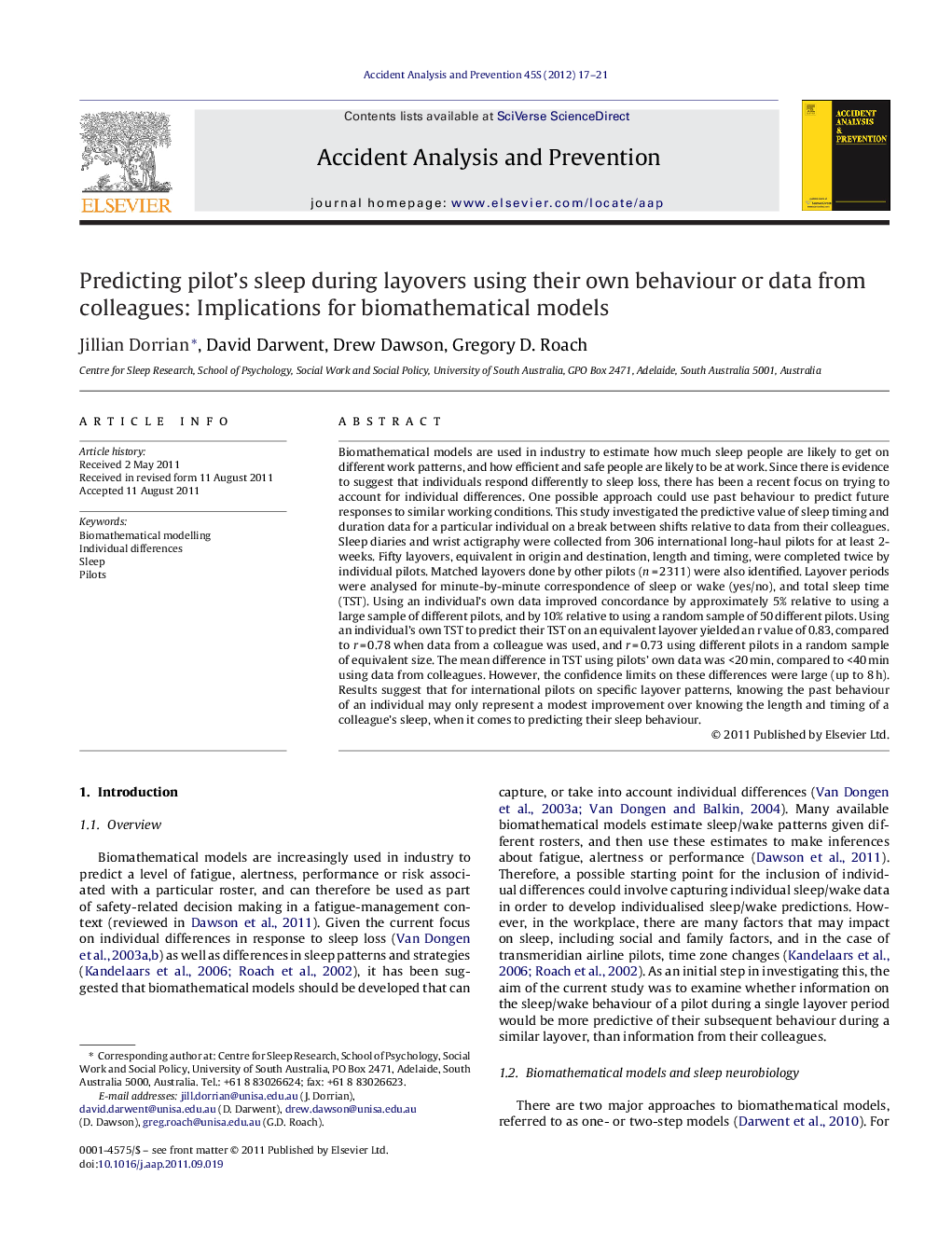| کد مقاله | کد نشریه | سال انتشار | مقاله انگلیسی | نسخه تمام متن |
|---|---|---|---|---|
| 572900 | 877384 | 2012 | 5 صفحه PDF | دانلود رایگان |

Biomathematical models are used in industry to estimate how much sleep people are likely to get on different work patterns, and how efficient and safe people are likely to be at work. Since there is evidence to suggest that individuals respond differently to sleep loss, there has been a recent focus on trying to account for individual differences. One possible approach could use past behaviour to predict future responses to similar working conditions. This study investigated the predictive value of sleep timing and duration data for a particular individual on a break between shifts relative to data from their colleagues. Sleep diaries and wrist actigraphy were collected from 306 international long-haul pilots for at least 2-weeks. Fifty layovers, equivalent in origin and destination, length and timing, were completed twice by individual pilots. Matched layovers done by other pilots (n = 2311) were also identified. Layover periods were analysed for minute-by-minute correspondence of sleep or wake (yes/no), and total sleep time (TST). Using an individual's own data improved concordance by approximately 5% relative to using a large sample of different pilots, and by 10% relative to using a random sample of 50 different pilots. Using an individual's own TST to predict their TST on an equivalent layover yielded an r value of 0.83, compared to r = 0.78 when data from a colleague was used, and r = 0.73 using different pilots in a random sample of equivalent size. The mean difference in TST using pilots’ own data was <20 min, compared to <40 min using data from colleagues. However, the confidence limits on these differences were large (up to 8 h). Results suggest that for international pilots on specific layover patterns, knowing the past behaviour of an individual may only represent a modest improvement over knowing the length and timing of a colleague's sleep, when it comes to predicting their sleep behaviour.
► Biomathematical models are used to estimate sleep, fatigue and safety at work.
► There has been a recent focus on accounting for individual differences in modelling.
► Sleep predictions based on (a) pilots own or (b) colleagues’ sleep history are compared.
► Pilots’ own sleep may represent a modest improvement over colleagues’ data.
► Models using individual data may provide small improvements given their complexity.
Journal: Accident Analysis & Prevention - Volume 45, Supplement, March 2012, Pages 17–21